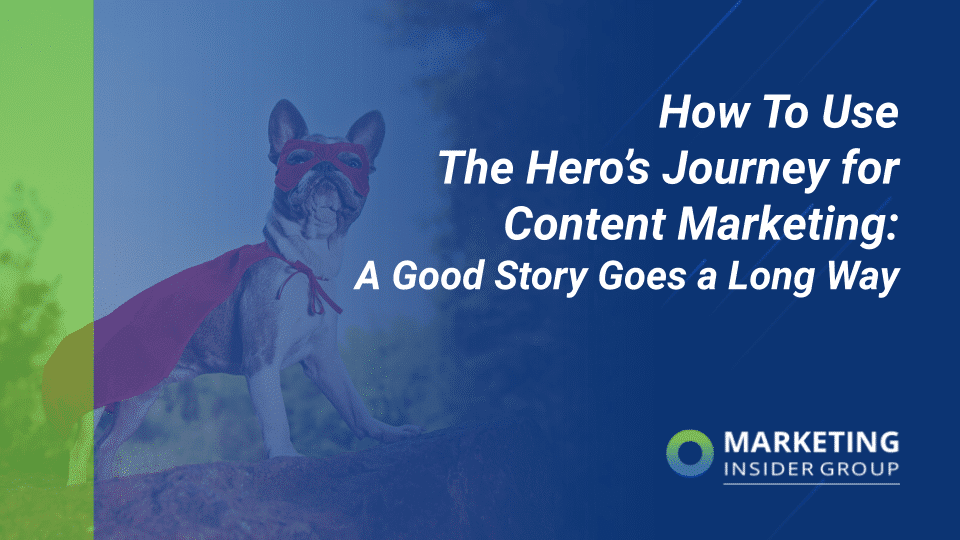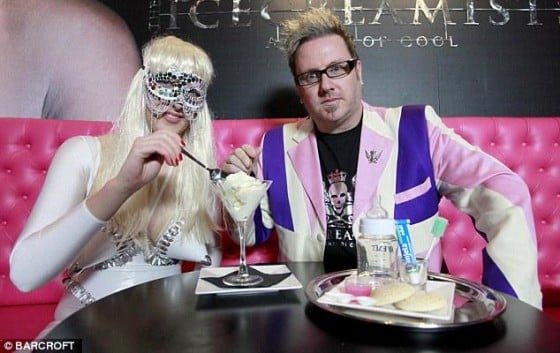
How To Hack Your Way Into The Press
Press coverage is an invaluable growth tool and, in most cases, a pretty cost-effective one too. That’s why I believe that a strategy for chasing coverage should always be part of your marketing plan.
But the best part is, you don’t have to aim for the top, all the time. While a front page spot in the New York Times or Washington Post would be pretty freaking awesome, writers on industry sites and publications can be much more approachable and receptive to your pitches than the journos at the frontlines of traditional newsrooms.
When I was trying to get the word out about ContentMarketer.io, for instance, I wasn’t always shooting for the moon. In fact, one of my key strategies was to go after mentions on industry blogs with small, but mighty, readerships. It wasn’t always easy, but I definitely think it paid off.
Stick with me to find out how you can replicate this strategy for yourself…
Build Your Brand and Storytelling Abilities by Telling a Great Brand Story
While you’re probably not going to approach the press with the tale of your success, an engaging backstory will add weight to every other story you tell. It’s a key part of building your brand, too, and a brand with a great story – a brand people recognize – is more likely to gain the media recognition they deserve when they have a fresh, new story to tell.
It’ll also be great practice for mastering your storytelling abilities (but more on that later…).
What is a brand story?
Let’s start by clarifying what a brand story is not: a brand story is not primarily about your company. The very best brand stories, conversely, have the customer at their center. I think Neil Patel and Ritika Puri got it spot on when in chapter three of their Beginners Guide to Online Marketing they advised brands to “think of your company as a supporting character.”
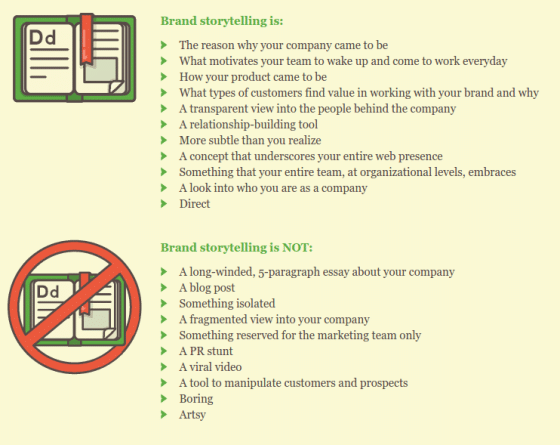
Writing a great brand story
As well as centering on the customer, the best brand stories look good, and embody a style that reflects the brand’s ethos.
Here’s one from popular UK beverage company Innocent:
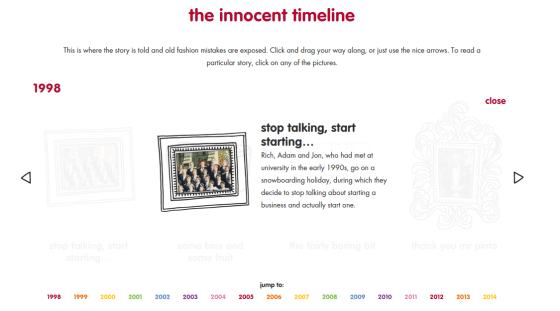
And another great example from Sharpie:
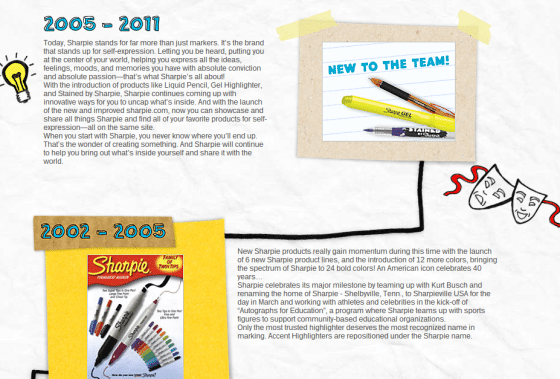
Some of the best of the best brand stories, however, adhere to the traditional idea of a story in only the very loosest sense. Great brand stories (and great stories, period) don’t have to follow a linear format.
Take a look at GoPro’s story. They summarize themselves in a single sentence, “GoPro makes the world’s most versatile cameras.”
Below that, is a letter from Nicholas Woodman (the company’s founder and CEO). The letter skips the history of GoPro entirely, and instead, delves into what makes the brand tick, and how they want their products to make you (the customer) feel.
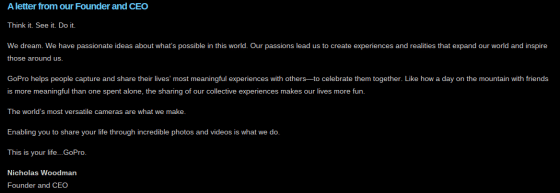
The page also includes a 7-minute long video that begins with an interview of Nicholas. Filmed back in 2011, the interview shows Nicholas talking about the company’s vision and what GoPro had achieved up to that point. The video then launches into around five minutes of GoPro footage (supposedly, their story “today”). Then it ends.
From this, it’s clear that stories – brand or otherwise – don’t need to have a clear beginning, middle, or end to be effective.
Your brand story should reflect how you want your brand to be perceived. Don’t bore people with the tale of your growth if that story isn’t interesting. Focus on your customers and your brand’s relationship with them. Make damn sure your brand’s personality shines through. Most importantly of all: make people care.
Find a Unique and Genuinely Interesting Story
A great brand story is a critical part of brand-building. And that’s important because, the bigger the brand, the easier it is to gain coverage in the press. In fact, some lucky brands can gain coverage simply by hiring someone.
As much as I’d like to be in that position (and as much as I assume you’d like to be too) few of us are able to say “jump” and have the press say “how high.”
The reality for most of us, is that if we want a journalist to write about our company, we have to give them something really worth writing about.
Of course, that’s easier said than done. Stick with me – it’s time to get your thinking caps on….
- Do you have a new product or service? You’re unlikely to get national coverage with this sort of story (unless you’re introducing something really innovative) but industry publications are always looking to write about new additions to the market. A new product is always worth shouting about.
- Are any of your products or services related to a current event? For example, there’s a lot of furor surrounding the evils of sugar right now. If you had a naturally low-sugar alternative to a popular product, this would be an excellent time to promote it.
- Is there anything especially unusual or controversial about your product or service? A really quirky USP could be just the hook you need to get tongues wagging.
- Have you bucked a trend? Perhaps every firm in your industry is experiencing a seasonal dip, while you’ve seen an uptick.
Gather Your Own Data
Still stuck for a story? No problem. Extract one by performing first-hand research and gathering your own, original data.
“There seems to be nothing the media love more than figures and surveys which convey (apparently) simple messages.”
I can’t say how accurate the above statement is, but I do know that interesting, insightful stats can provide the basis of an excellent story. If you don’t have a story to tell, start gathering data and build your own on the back of what you find.
The quickest and easiest way to gather data is with a survey. You have a few options here:
- You can use a tool such as SurveyMonkey or SurveyGizmo to build, and promote, your own survey.
- Or, you can use a tool that will find respondents for you. SurveyMonkey actually offers this, but it’s certainly not your only option.
Bear in mind that buying survey responses comes at a cost – quite a large cost if you’re looking for a significant number of responses (and you should be – a pool of 1,000 respondents will lend your findings far more credibility than a pool of 100 respondents).
If you’re working to a tight budget, there are a number of things you can do to promote your own survey:
- Send out an email message asking your subscribers to fill out the survey (offering an incentive – such as the chance to win a prize – or a discount will help your response rates).
- Promote your survey over social media. You’ll probably want to allocate some budget to paid promotion (you’re unlikely to get much visibility on Facebook or Twitter unless you do). However, the cost of this should still be significantly less than paying per response. Again, it’s a very, very good idea to offer an incentive of sorts. And since you’re not necessarily targeting your existing subscribers or customers, a prize will likely reap better results than a discount.
Of course, just because you’ve gathered some data, that doesn’t mean anyone’s going to care. The subject matter needs to be interesting, and the results, ideally, should either:
- Surprise, or
- Confirm a preconceived notion.
You don’t have to keep on the straight and narrow with your research, either. Think outside the box.
OKCupid set out to discover which smartphone users have the most sex (iPhone users, in case you were interested…)

While Timberland executed an “Eco-Love Survey” which discovered that more than half of us would avoid dating an “eco-sinner.”
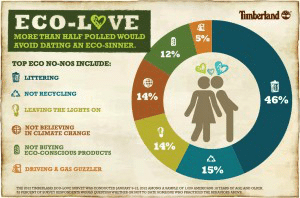
Beyond this, you should:
- Clearly define what you want to achieve.
- Keep the survey as short and sweet as possible.
- Keep the questions simple.
- As far as you can, use close-ended questions (i.e. questions that require a yes or no answer – this makes the survey much easier to complete).
- Test your survey on an audience that’s played no part in its creation.
Make Your Own Story
Another way to whip up a great story if you don’t have anything worth talking about (yet) is to start doing the sort of things that are worth talking about. You can’t expect an awesome story to land in your lap, so get out of the office and begin doing things that will give you a tale worth telling.
- Get involved with a charity (don’t just donate money – do The more unique and innovative, the better).
- Host an event.
- Share your expertise by teaching a class (either on or offline).
- Do something awesome for your employees.
- Do something awesome for your customers.
A PR stunt doesn’t have to cost the world, either. Here are a few examples of companies whose brands blew up after easy, affordable PR moves:
Morton’s Steakhouse
Remember when Morton’s Steakhouse obliged a hungry consumer’s request to meet them at Newark Airport with a porterhouse?
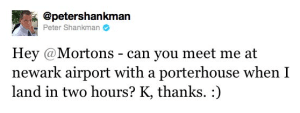
They didn’t do it out of the goodness of their hearts – Peter Shankman had more than 100,000 followers at the time – but it’s still a seriously clever, and in the scheme of things, cost-effective stunt.
Tinder
Tinder’s Co Founder Whitney Wolfe played an instrumental role in its success when she toured sororities and fraternities to pitch the app and drive installations. All told, her tour grew the app from 5,000 to 15,000 users.
The Icecreamists
The now defunct London ice cream shop “The Icecreamists” turned heads and got people talking when they revealed they would be the first ever company to sell ice cream made from real breast milk.
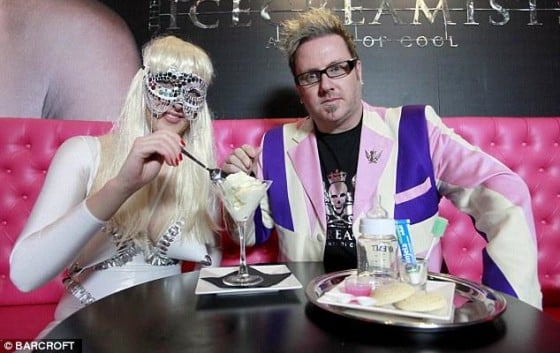
The product wound up being on sale for a mere three hours after Westminster Council declared it potentially unfit for human consumption, but in the meantime, the company’s unusual offering resulted in thousands of column inches and endless discussions over social media.
Writing Your Story
“How a story is told is more important to the audience than its topic, what it is about.” American Press Institute
Don’t assume that an interesting story is enough to grab the attention of the press: how you tell your story is equally as important.
A boring story told in the right way can become interesting, just like a supposedly great story told in the wrong way can suck.
Look to the example of filmmakers Ramin Bahrani and Werner Herzog, who joined forces to create a short movie that tells the tale of how a plastic bag makes it from the store, to the landfill, and eventually to the ocean (aptly titled, “Plastic Bag”). An Oscar-worthy plotline? Hardly. But the dialogue, presentation, and underlying message makes for oddly compelling viewing. The film was highly-regarded by critics and currently boasts a pretty-impressive 7.8 rating on IMDB.
So, what actually makes a great story? How can you take a relatively benign topic and turn it into something people care about and want to write about themselves? Think back to when we looked at how to tell your brand story; many of the same lessons apply here.
Focus your story on your audience
Find an angle that people will be able to relate to; that they’ll be able to empathize with. Nothing is more boring than self-absorption, as expressed by people who tell stories with a focus on “me, me, me.”
In “Plastic Bag,” we’re presented with a woman who receives a plastic bag while shopping, reuses it, and then discards it without thinking – something many of us do, time and again. Consequently, it’s a situation that most of us can easily relate to.
Play with the structure of your story
There’s no hard and fast rule that says a story should follow a linear format (with a clear beginning, middle, and end).
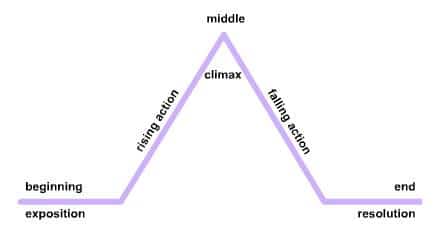
Bear in mind that your plan is to approach the press with this story. The journalists you contact aren’t going to read your story in full unless something catches their eye at the start. If the most interesting element of your story is how it finishes, begin it at the end.
Weave your story around a person; not an object or an event
If, for example, you’re reporting on a new product you’ve designed, don’t just state its features and benefits – showcase them through the eyes of a protagonist.
In “Plastic Bag,” the bag itself is given a voice. He tells his own story. If you haven’t already, watch a minute or two of the movie and imagine how effective it would be if instead, the narrator spoke about the bag instead of as the bag.
Spoiler alert: nowhere near as effective.
Ask (and answer) the right questions
Every topic, however “boring” hides an interesting angle – you just need to ask the right questions.
Let’s think about an actual plastic bag, for instance.

On the surface, is this an interesting topic? Not to most people, no. But let’s see how that changes as we start asking questions…
- “How many plastic bags are sent to landfill each day?”
- “How did we come to be so reliant on plastic bags?”
- “Why is it deemed acceptable to hand out plastic bags with our shopping?”
- “What’s being done to reduce our reliance on plastic bags?”
- “When did we begin to use plastic bags?”
Once we begin delving into the questions people might have about a given topic, it starts to look a lot more interesting.
Next, take this approach up a notch and head over to Quora. Even a search for a topic as innocuous as plastic bags brought up some interesting questions.
- “What is better for the environment, paper or plastic bags?”
- “What’s life like without plastic bags?”
- “What are all the arguments against banning plastic bags?”
- “Why do stores charge for plastic bags?”
Apply this to your storytelling by asking yourself – or, better yet, asking others – what people want to know about your subject matter, then weave the answers to some of those questions into your story.
Bonus Hack: Always Be Taking Photos
No story is complete without a great photo (or series of photos). Carry a camera with you everywhere and use it, all the time, to save yourself from boring, generic stock photography.
The Perfect Pitch
Gaining traction for your story is going to be tough if you don’t pitch it right. Journalists are very busy people and if you don’t capture their attention with your subject line, and subsequently, the opening line of your email, it’s unlikely your story will ever actually be heard.
One of the key strategies I used to promote my latest venture, Contentmarketer.io, was to secure blog posts on big-name industry sites.
It wasn’t easy. But it certainly wasn’t impossible.
After a few failures, and a few successes, I began to learn what works. While I can’t speak for everyone, my experience showed that the perfect pitch is…
- Interesting, in that it makes them want to read more
- Personalized enough to demonstrate that you’ve done your research into the person you’re pitching
- States why they should care about your story
- Is short (ideally less than 100 words)
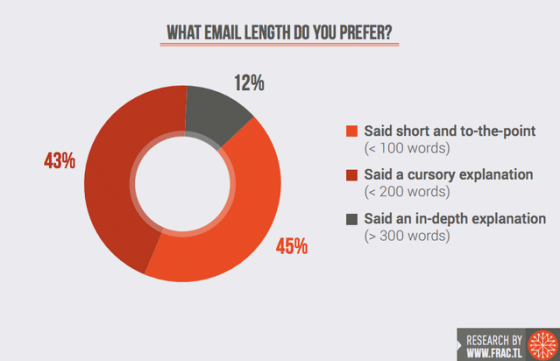
Erica Swallow, associate editor at Mashable – a publication that’s undoubtedly on the top of every marketer’s hit list – said a great pitch, “is succinct and targeted to Mashable’s audience. That’s all. It’s as simple as that. The most successful PR peeps know how to get to the point in 2-3 sentences and they don’t even feel the need to attach that 400-word press release.”
When talking about what constitutes a poor pitch, Erica went on to say, “understand who you are pitching, sum up your thoughts in less than four sentences, use spell check, entertain me, and ditch the buzzwords if you want your emails to stay out of the trash can.”
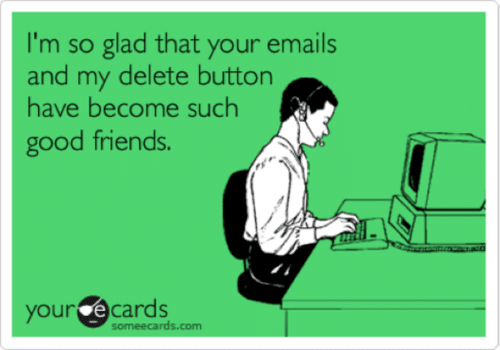
It’s worth remembering though, that not everyone you contact is the same. A small-time blogger who receives very few emails is likely going to have more time for you, and might prefer to read a conversational email that demonstrates you follow their blog and are interested in what they do and what they have to say.
The majority of journalists, however, don’t have time to chat. Win them over by getting to the point and showing them why they should care. If you can get that far – and if your story is right for them – they’ll use it.
The fact is that your story is more important than your pitch. A journalist isn’t going to say “no” to the perfect story if the pitch is a little lackluster, and, likewise, the best pitch ever won’t convince them to use your story if it just isn’t right.
Write the perfect story, and it will pretty much sell itself.
Bonus Hack: Pitch an Exclusive
This won’t work every time, but, publications love to be the first to the party. If you have a great story, you can make it seem all the more enticing by offering it to a big publication as an exclusive. This means that they’ll have the rights to publish your story first.
Don’t worry – a great story will still spread. You’re just going to boost your odds of getting coverage with a publication you want to be featured in by allowing them to get there before anyone else.
Make the Stories Find You
Last but not least, my very favorite hack for finding my way into the press doesn’t involve having to write a story of my own at all.
Thanks to HARO (Help A Reporter Out), I get sent three emails a day with requests from bloggers, journalists, and writers, who want experts to provide a quote, be interviewed, or contribute in some way to an article they’re writing.
Things like this:

And this:
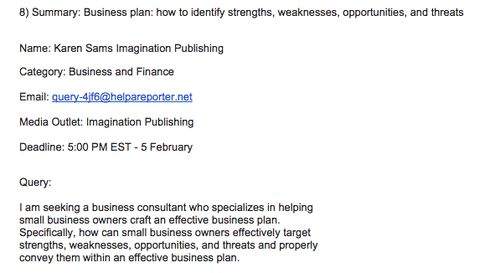
It doesn’t pay off every time – often, you’ll have a to craft a paragraph or two of content and simply cross your fingers that it gets used and the author credits you properly. And sometimes, they don’t.
But, since it’s free (you can pay for priority and more features, but it’s not necessary), I can’t think of a good reason why anyone wouldn’t use it, given that pretty much every industry and subject matter is covered.
Bonus Hack: Become a Go-To Source in Your Industry
Every time you help a reporter out with a story, let them know that if they ever need assistance with a similar story in future, you’ll be happy to help.
Do this enough and you’ll never have to write your own story again.
Key Takeaways
We’ve covered a lot of information in this post, and since a lot of it is higher-level thinking, I thought it’d be helpful to wrap everything up for you into a series of key takeaways you can use to put these strategies into practice.
Here’s how to develop your brand’s story and use it to hack your way into the press:
- Begin by writing your brand story. It’ll help you build your brand, hone your storytelling abilities, and add weight to every other story you tell.
- Brainstorm a unique and interesting angle for a story.
- Do you have a new product?
- Are any of your products or services related to a current event?
- Is there anything particularly unusual or controversial about any of your products or services?
- Have you beaten the odds and bucked a trend?
- Create your own data. Execute surveys to gather new and interesting industry statistics, and weave a story around your findings.
- Make your own story. Get out there and start doing the sorts of things that are worth talking about. In other words: host a PR stunt.
- Write your story. Give it a relatable protagonist and play with its structure. Don’t include facts that aren’t interesting or deviate from the point, and don’t feel obliged to stick to a rigid beginning, middle, and end.
- Send your pitch. Be interesting, personalize it, show them why they should care, and keep it short (under 100 words is ideal).
- Use HARO. To locate writers and journalists that want experts to contribute to their stories. Encourage reporters to contact you in the future, creating an army of PR opportunities coming straight to your door.
Good luck in your hunt for coverage! Let me know how it goes for you by leaving a comment below with your successes


